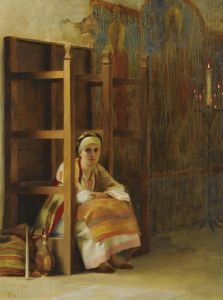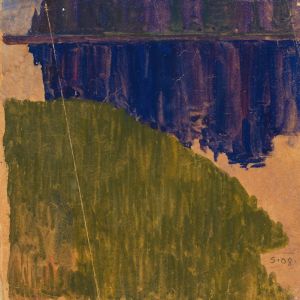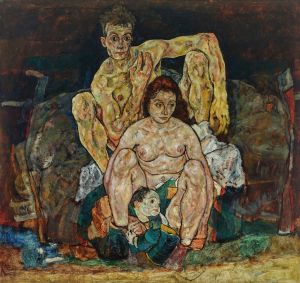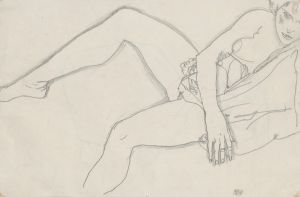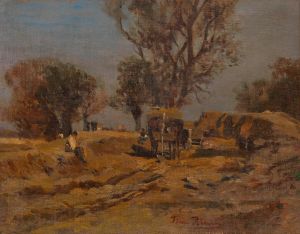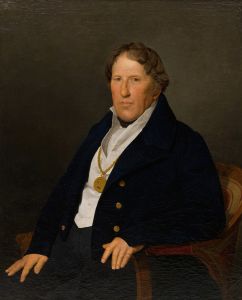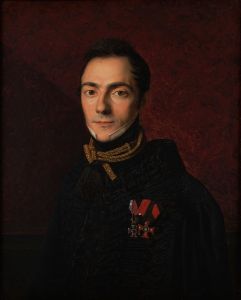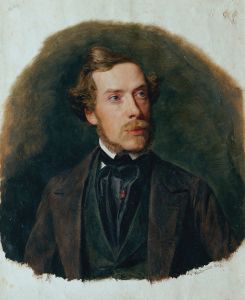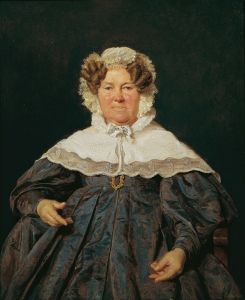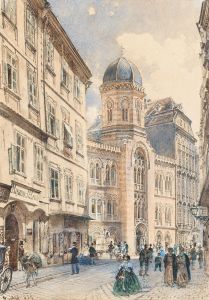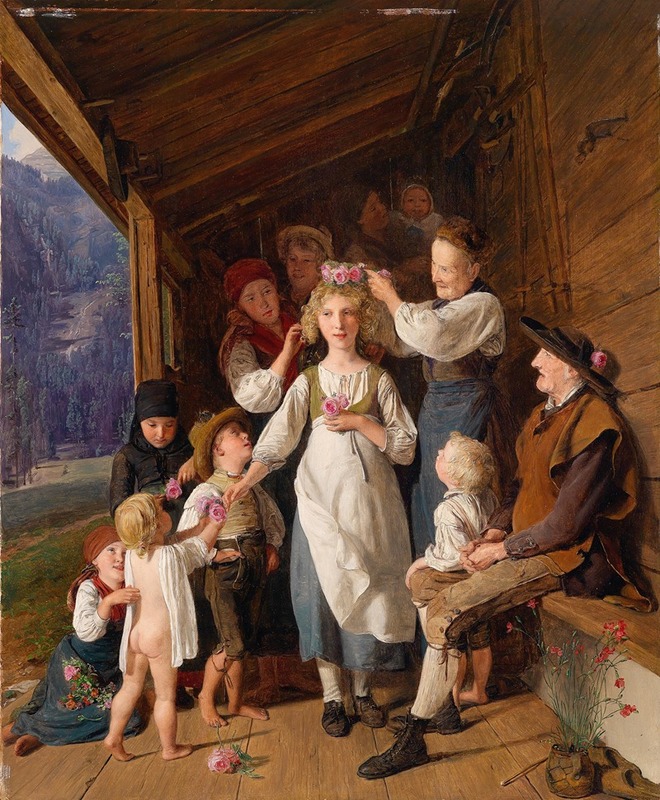
Die Kranzljungfer
A hand-painted replica of Ferdinand Georg Waldmüller’s masterpiece Die Kranzljungfer, meticulously crafted by professional artists to capture the true essence of the original. Each piece is created with museum-quality canvas and rare mineral pigments, carefully painted by experienced artists with delicate brushstrokes and rich, layered colors to perfectly recreate the texture of the original artwork. Unlike machine-printed reproductions, this hand-painted version brings the painting to life, infused with the artist’s emotions and skill in every stroke. Whether for personal collection or home decoration, it instantly elevates the artistic atmosphere of any space.
Ferdinand Georg Waldmüller was an Austrian painter renowned for his contribution to the Biedermeier period, a time characterized by a focus on realism and detail in art. One of his notable works is "Die Kranzljungfer," which translates to "The Bridesmaid." This painting exemplifies Waldmüller's skill in capturing the nuances of everyday life and the beauty of the natural world, which are hallmarks of his artistic style.
Waldmüller was born on January 15, 1793, in Vienna, Austria. He studied at the Academy of Fine Arts in Vienna, where he honed his skills in portraiture and genre painting. Over time, he became one of the most significant figures in Austrian art, particularly during the Biedermeier period, which spanned from 1815 to 1848. This era was marked by a focus on domesticity and the middle class, with art often reflecting the serene and idyllic aspects of life.
"Die Kranzljungfer" is a testament to Waldmüller's ability to depict scenes with a high degree of realism and emotional depth. The painting features a young bridesmaid, a subject that allows Waldmüller to explore themes of innocence, beauty, and the rituals of social life. His attention to detail is evident in the delicate rendering of the bridesmaid's attire and the surrounding environment, which is often lush and vibrant, reflecting the artist's appreciation for nature.
Waldmüller's work is characterized by his use of light and color to create a sense of immediacy and presence. In "Die Kranzljungfer," he employs a naturalistic palette that enhances the lifelike quality of the scene. The interplay of light and shadow adds depth to the composition, drawing the viewer's eye to the central figure while also highlighting the intricate details of the setting.
Throughout his career, Waldmüller was known for his ability to capture the essence of his subjects, whether they were individuals, landscapes, or scenes of everyday life. His paintings often convey a sense of tranquility and harmony, reflecting the values and aesthetics of the Biedermeier period. "Die Kranzljungfer" is no exception, as it embodies the artist's commitment to realism and his keen observation of the world around him.
Waldmüller's influence extended beyond his lifetime, as he became a pivotal figure in the development of 19th-century Austrian art. His works are celebrated for their technical precision and their ability to evoke emotion and narrative through visual means. "Die Kranzljungfer" remains an important example of his artistic legacy, showcasing his mastery of composition, light, and detail.
In addition to his artistic achievements, Waldmüller was also an advocate for the arts and education. He believed in the importance of art as a means of cultural expression and was involved in various initiatives to support young artists and promote the appreciation of art in society.
Ferdinand Georg Waldmüller passed away on August 23, 1865, in Hinterbrühl, Austria. His contributions to the art world continue to be recognized and celebrated, with his works held in prestigious collections and museums around the world. "Die Kranzljungfer" stands as a testament to his enduring impact on the art of the Biedermeier period and his ability to capture the beauty and complexity of human experience through his paintings.





